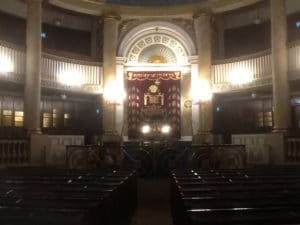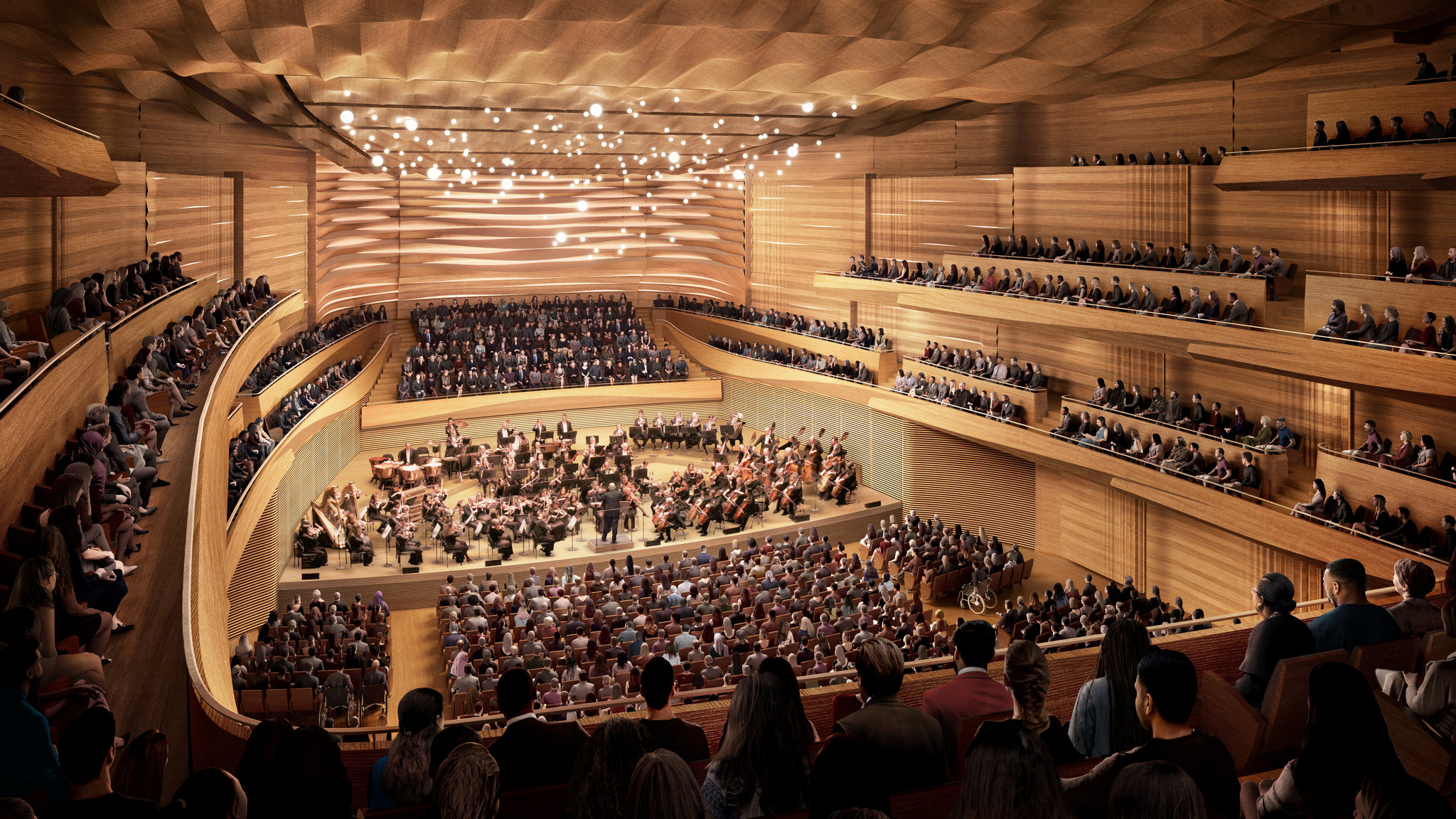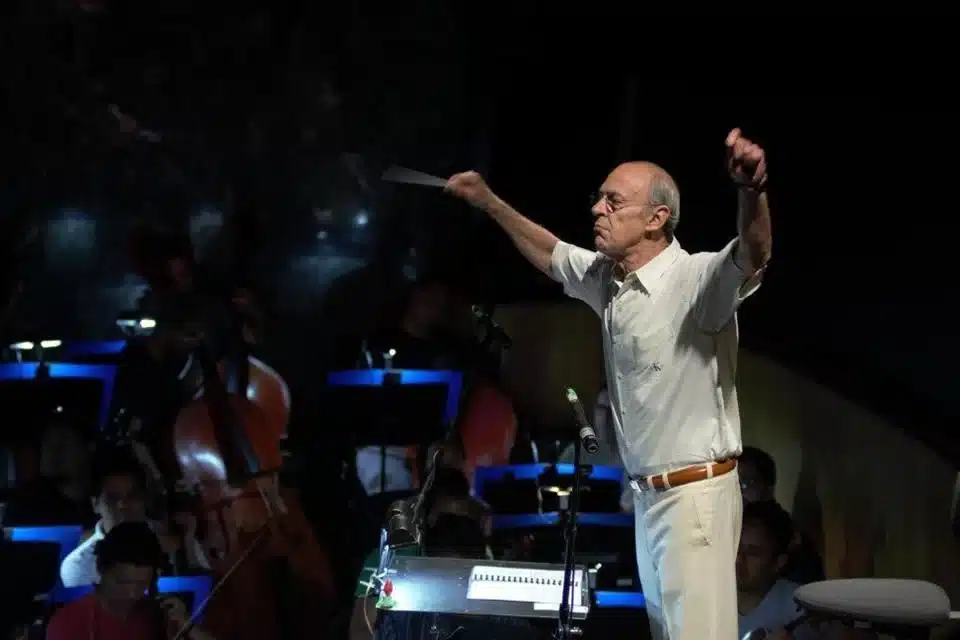Beethoven approaches Yom Kippur
mainWelcome to the 121st work in the Slipped Disc/Idagio Beethoven Edition
String Quartet No. 14 in C sharp minor op. 131 (part 2)
You can read part 1 here.
The sixth movement of Beethoven’s 14th string quartet opens, for reasons he never indicated and no-one else has explained, with the unmistakable musical phrase on Kol Nidrei that Ashkenazi Jews use to commence their Yom Kippur services.
Beethoven had contact with Jews through his life and was certainly not anti-semitic, but there is no record of him ever entering a synagogue or taking an interest in Jewish worship. How and why he quoted Kol Nidrei in his most important string quartet is a mystery we will never fathom, though it is worth examining the clues since the insertion is by no means insignificant.
Bonn, where Beethoven grew up, had a Jewish community from about the year 400. At the time of Beethoven’s birth, the Jews were locked away from the rest of the city inside a ghetto of 19 houses. A small synagogue had been erected in 1758 with room for 44 men and 29 women. After the French Revolution of 1789, Jews were allowed to live outside the ghetto. In 1794 Bonn was occupied by the French and Jews received full civic rights. By now, however, Beethoven was on his way to Vienna.
The Jewish population of Vienna in the 1790s numbered in the low hundreds and was confined to the second district, on the poorer side of the Danube canal. Under Austrian law, no Jewish community was recognised to exist in the capital, but those restrictions were dissipated by the French occupation in 1809. Fifteen years later an impressive temple was opened at Seitenstettengasse in the first district. There were still fewer than 2,000 Jews in the city but a handful of them had become wealthy and the synagogue could afford to employ eminent rabbis and a celebrated cantor, the composer Salomon Sulzer, who proved a singular attraction to musicians. Liszt was an admirer. Schubert accepted a commission to provide Hebrew Psalm settings for the Friday night service.

Beethoven, it has been suggested, was asked to compose a cantata for the synagogue’s inauguration but there is no known documentation of any such request. The year 1825, however, was when he was writing the 14th string quartet and it may be that an awareness of the consecration of the first Jewish synagogue in Vienna put him in mind of the Kol Nidrei prayer that opens the Yom Kippur services. This is about the strongest cause that can be argued for the presence of the tune in his seminal string quartet.
Kol Nidrei itself is problematic. The Aramaic prayer, originating in Iraq in the period 600-1000AD, asks God to accept the annulment of the year’s unfulfilled personal pledges so that people can utter their Holy Day prayers with a clear conscience. Some authorities argue that the role of this prayer was to permit Jews who had been forcibly converted to Islam or Christianity to revert to their faith. Rabbis down the centuries have sought to abandon the prayer but tradition proved stronger than theology and, at some point in time, the prayer acquired a tune that was simply immutable.
The origin of this sighing melody, which is unknown, predates the 17th century. By the time of Sulzer and Beethoven it had acquired a patina of cantorial elaboration, almost of theatrical performance, and was among the best known melodies of the Ashkenazi Jews.
Later in the 19th century, Max Bruch would turn it into a successful cello concerto.
Beethoven cannot have heard it in 1825, when he was profoundly deaf. If he knew it at all it would have been from his youth in Bonn and if he consciously quoted it in the quartet it may have been as a nod of nostalgia to his younger self. A rumour that he had once fallen in love with a Jewish woman, Rachel Levin (better known by her married name Rachel Varnhagen) can be comprehensively dismissed.
The section of the 14th quartet that contains the Kol Nidrei theme is this:
One has to wonder whether Jewish players in string quartets have a different take on the Kol Nidrei theme than non-Jews. That would depend, in the first instance, whether they were familiar with Jewish liturgy in an age when many had been raised without religion. But we can’t know until we listen.
The Amadeus Quartet, comprising three non-religious Hitler refugees from Vienna and one London Jew, play the sixth movement as if unaware of any notion of Kol Nidrei. In the Juilliard Quartet’s version, played by New York Jews, the linkage is pronounced and unmistakable. The 1966 Fine Arts Quartet, of similar background, give an even more explicit emphasis. Most Jewish-sounding of all is the 1961 Budapest String Quartet, comprising Joseph Roisman, Jac Gorodetzky (Violins), Boris Kroyt (Viola), Mischa Schneider (Cello).
At the extreme far end of the ethnic spectrum the Nazified Schneiderhahn Quartet of Vienna in 1944 cleanse their intepretation not only of any Jewish association but of any hint of orientalism. Listening closely, it seems as if this is a conscious and deliberate artistic decision, so remote is their manner of expression from the mainstream of string quartets.
Turning to the post-war Quartetto Italiano, who were not Jewish, we find a phrasing that is almost Kol Nidrei, but not quite. The deep sigh is immensely evoctive not so much of Jewish experience but of Mediterranean civilisation, as if the tunes comes not necessarily from Judaism as from the intermingling of ideas that has flourished around the coasts of the Great Sea from the dawn of humanity. Perhaps that’s the heart of the matter, perhaps not. In musical terms, the Italiano are unarguably convincing.





Small, the Jewish community in Josephine and Leopoldine Vienna may have been, but unimportant it was not (sit venia verbo, channeling Master Yoda).
Privileged “Hofjuden” played a subdued but essential role at court even at the height of Theresian repression.
After Joseph II’s “Toleranzpatent” (January 2, 1782), the situation of the Jewish community eased up a bit. Of course, Joseph needed the money, but also the economical impetus. He was not disappointed.
Beethoven frequented from early on two of the most influential Viennese musical salons, animated by the sisters Fanny von Arnstein and Cecily (Cäcilie) von Eskeles, (née Zippora Itzig, from an equally influential Jewish banking family in Berlin). Both sisters were practising and noted musicians. Their husbands were pre-eminent bankers in Vienna in their day, Bernhard Freiherr von Eskeles and Nathan Adam von Arnstein, along with Raimund Wetzlar von Plankenstern, Mozart’s benefactor.
All three bankers were, obviously, of Jewish origin.
Mozart and Lorenzo da Ponte were clients of the Bankhaus Arnsteiner & Eskeles.
So was Beethoven, a few years later. All three are known to have frequented the Arnstein and Eskeles salons, important musical pépinières. On Da Ponte, we have the entry of the Imperial police, noting with disapproval “den Umgang des getauften Juden Da Ponte mit der Jüdin Eskeles”. Fortunately, Da Ponte’s employer, emperor Joseph II, was deeply unimpressed with the report.
A final, musically relevant note: Beethoven was introduced by Fanny von Arnstein to her young protégé, coming from Prague to study with Albrechtsberger and Salieri: Ignaz Moscheles. Beethoven and Moscheles became firm friends. Moscheles would later pen one of the very first English-language biographies of Beethoven.
While there is no documentary evidence (yet) of Beethoven having heard the Kol Nidrei in Vienna, it can be shown that he frequented a deeply musical circle which was at the same time deeply steeped in Jewish tradition, adequately cognizant of it, emancipated but not yet dissociated.
On this circumstantial evidence, I rest my case.
P.S.: The Palais Eskeles now is the home of the “Jüdisches Museum Wien”. Most appropriate.
Interesting.
Composers pick-up melodic material from any source if it pleases them. Not necessary to seek all kinds of explanations behind Beethoven’s choice, it is a beautiful introduction of the finale of the quartet. Indeed he may have remembered it from youth, or someone showed him the melody.
There is a frequent claim Beethoven quotes the Irish folk song ” Save me from the grave and wise” in the last movement of the seventh. If so, it is unrecognisable to us here in Ireland. His folk song arrangements seem odd especially when sung by Germans!
It’s indeed silly projection. There are also people who claim that Beethoven cited the EU hymn in the finale of the 9th.
The Budapest recording you cite was not the 1961, which was in stereo, and which featured Alexander Schneider as second violin (as did their 1942 recording). Gorodetzky was, of course, the second violin when they recorded the cycle for Columbia in the early 1950’s, and that’s the Idagio recording in the link.
No, Bruch did not turn it into a cello concerto; his Kol Nidrei is a short rhapsody for cello and orchestra. Presumably on the strength of this, Bruch was long thought to have been Jewish – even Grove’s dictionary perpetuated this fallacy up to the 5th edition (1951), where the error is acknowleged in a footnote. Kol Nidrei is is one of several works on themes of various ethnic origins, including the Scottish Fantasy, an arrangement of twelve Scottish folk songs, ‘Schön Ellen’, also based on a Scottish text, an Adagio on Celtic Themes and a suite on Russian and Swedish folk melodies. Given the he also wrote a Mass and other Christian liturgical works, it seems unthinkable that he should have been considered Jewish, though of course the Nazis would no doubt have approved of this on the strength of his setting of Kol Nidrei. Still not convinced? Then the clincher might well be the fact that his full name was Max Friedrich Christian Bruch!
Not only wasn’t Bruch Jewish, but after Germany’s defeat in WWI he vented antisemitic rants, one of which is quoted in Christopher Fifield’s biography ‘Max Bruch – His Life and Works’ (P.318).
The plaintive Kol Nidrei melody has been set by at least two other non-Jewish composers: Emil von Reznicek wrote a set of variations on it and, surprisingly, it also appears in Ketèlbey’s ‘Sanctuary of the Heart’.
I won’t comment on this stretch of imagination on your part other than to say I’d lay good money that most, if not all, of the musicians who make (according to you) a “pronounced and unmistakable” connection to the Kol Nidrei wouldn’t the slightest idea what you’re talking about.
Moreover, I don’t know where you come up with 1961 as the recording date for the Budapest, which is certainly wrong.
I agree. The case that the introduction to the finale of the quartet must have derived from Beethoven’s hearing of the Kol Nidrei only becomes convincing if the music doesn’t resemble any other music Beethoven might have heard or read during his life.
Personally I cannot see or hear any Jewish connections in op 131 at all.
I seem to recall reading In Gerhard von Breuning’s memoirs, Aus dem Schwarzspanierhause he mentions how his father helped to get his nephew Karl a cadet commission in Lt Feldmarschall Stutterheim’s regiment and so, op 131 in a sense was a thank you.
The von Breuning memoirs also confirm that Beethoven’s autopsy was in fact carried out by Prof Johann Wagner and not by Prof Siebert, who carried out an operation on Beethoven to drain ascites fluid, he most likely had peritonitis.
Indeed there may be no other Jewish connection, but that opening phrase is Kol Nidrei. (Hey, Niels Marthinsen quotes Misirlou in his highly entertaining 2nd symphony but that doesn’t mean that there’s a Lebanese rock ‘n’ roll connection.)
That is rather tenuous, a phrase could be anything to non jews. There is a claim he used an Irish folk tune in the seventh, if so it is unrecognisable to us in Ireland.
There are many thousands of tunes in the world and a finite number of notes to compose with.
It’s inevitable that you can find a couple of tunes which share a couple of notes.
That’s all. Nothing to see here.
Yes, I just heard some ominous sounding descending minor seconds in both. Hardly unique.
a very interesting article – thank you for that ! nevertheless it is deeply disturbing that you mention your kind-of-rassistic view of ‘open-minded, emotional, natural’ southern influence (jewish – italian) and the (how you call them) ‘nazified’ or ‘cleansed’ – or just simply more intellectual, less romantic, less kitschy – interpretation of the immense and great violinist Wolfgang Schneiderhan.